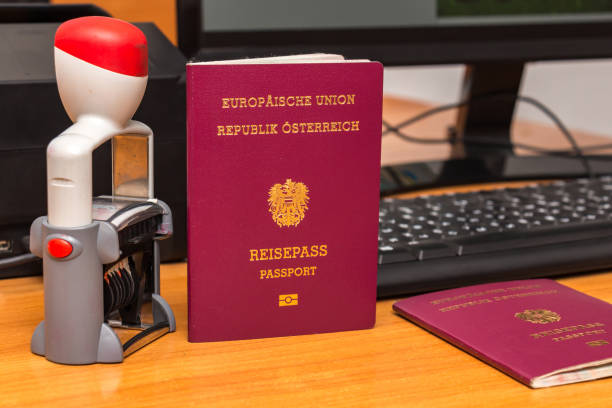EU Border Agency Frontex Unveils New Crisis Handbook, Digital ID Checks
Sep 26, 2025
Category: Border and Security EU Frontex News

Frontex, the European Border and Coast Guard Agency, has introduced two key updates to help Europe handle migration and security challenges at its borders.
On September 17, it published the second edition of its Handbook on Contingency Planning for Border Management and Return, which guides Member States on how to move quickly from early warnings to coordinated action in a crisis.
The next day, Frontex announced new digital image standards for travel and identity documents under the False and Authentic Documents Online (FADO) system. These standards aim to improve the detection of advanced forgeries.
Both measures support ongoing EU work to update border policies under the European Border and Coast Guard Regulation and the wider EU Pact on Migration and Asylum.
The goal is to give Member States practical tools that combine strong preparation with new technology.
Moving from alert to action
The contingency planning handbook, first published several years ago, is now in its second edition. It targets EU Member States and Schengen-associated countries that may face sudden migration flows, nearby armed conflict, or other border emergencies.
According to Frontex, the handbook turns international practices into a four-phase cycle: Plan & prepare; Respond & lead; Test; Review & adjust.
Each phase includes key factors for success, checklists, and review questions to help authorities match their decisions with operational needs.
The handbook also introduces the RACER pathway—Report, Assess, Convene, Execute, Resolve—a step-by-step model with clear triggers for when to scale crisis measures up or down.
For the first time, it also addresses return operations, adding procedures for sending back people who do not have the right to stay.
Frontex explained that this creates “a fully integrated approach” to both border management and return, two areas that often overlap in a crisis.
Tools for national authorities
The handbook provides templates such as stakeholder lists, resource tables, early-warning indicators, and communication plans. These tools help national border agencies, interior ministries, and Frontex Liaison Officers prepare for emergencies in a consistent way.
It also offers exercise scripts and test report templates to support simulations, giving Member States a chance to practice before real crises occur.
By clearly defining who is responsible for each task, the handbook aims to reduce confusion in the early stages of a crisis. Frontex stressed that it helps authorities act on vulnerability assessment recommendations, turning identified weaknesses into concrete solutions.

Tested in recent operations
Frontex pointed to several cases where the first edition of the handbook proved useful. At the start of the war in Ukraine, it helped brief national experts on how to prepare for possible mass displacement.
In the Western Balkans, it guided partners in creating migration contingency plans that matched EU standards under the Instrument for Pre-accession Assistance (IPA III).
The European Union Agency for Asylum also drew on its methods to develop a manual for asylum and reception planning under the EU Pact. Member States have used it as well to carry out recommendations from vulnerability assessments.
Frontex spokesperson Krzysztof Borowski said the agency continues to help Member States apply the handbook in real situations. The handbook is available on Frontex’s official website.
Raising standards in document security
A day after releasing the handbook, Frontex introduced another measure: new technical standards for digital images of travel and identity documents.
These standards are part of the modernization of the FADO system, which EU border guards have long used to share images of genuine and forged documents.
The updated version, called EBCG FADO (European Border and Coast Guard False and Authentic Documents Online), is designed to make document checks more reliable as forgery methods become more advanced.
FADO has been the EU’s central platform for spotting fraudulent documents for over 20 years. With counterfeiters now using sophisticated tools, authorities stressed the need for detection systems to keep up.
The new standards unify how documents are captured, processed, and stored, creating what Frontex calls a “common language for document security across Europe and beyond.”

Ensuring quality, consistency
The Frontex Centre of Excellence for Combating Document Fraud worked with experts from Member States to draft the new standards. They require all images—whether passports, ID cards, or visas—to meet strict quality levels.
This guarantees that border guards and forensic experts using EBCG FADO have access to clear, reliable images.
For border officers, this means quicker and more accurate checks. For forensic specialists, it offers a dependable archive of reference documents.
For technology developers, the standards provide a clear framework for building tools that work smoothly with operational systems.
Built for today and tomorrow
Frontex stressed that EBCG FADO is more than just a technical upgrade. It runs on a new platform designed for user needs, with stronger system compatibility and a structure that can expand as needed.
This setup supports both current border checks and the detection of new types of fraud.
The system’s governance has also changed. Under Regulation (EU) 2020/493 and Article 79 of Regulation (EU) 2019/1896, management of FADO moved from the Council of the EU’s General Secretariat to Frontex.
The agency noted that this shift modernizes oversight and makes the system more adaptable to future challenges.

Changing procedures for travelers, migrants
The release of Frontex’s contingency planning handbook and the tightening of document security standards also influence how EU countries design and apply immigration policies.
By offering practical templates, decision-making models, and early-warning indicators, the handbook creates a framework that Member States can incorporate directly into national legislation and administrative procedures.
This helps ensure that responses to migration pressures are consistent with EU-wide standards.
At the same time, the modernization of FADO into EBCG FADO, with its harmonized digital image standards, establishes a technical baseline for detecting document fraud.
This reduces disparities between countries’ document control practices and strengthens the reliability of identity verification at borders.
For policymakers, these tools support the dual objectives of maintaining secure borders and complying with EU obligations on asylum and return.
As systems like the Entry/Exit System (EES) and the European Travel Information and Authorization System (ETIAS) take effect, national immigration policies will be shaped not only by political priorities but also by operational requirements set at the European level.
Together, these measures create stronger alignment between Member States, reducing the scope for divergent practices in migration management and border control.
Shaping immigration policy across member states
Frontex’s new contingency planning handbook and stricter document security standards also shape how EU countries develop and apply immigration policies.
With its templates, decision-making models, and early-warning indicators, the handbook gives Member States a framework they can build into national laws and administrative procedures. This helps keep responses to migration pressures consistent with EU-wide standards.
The modernization of FADO into EBCG FADO, with unified digital image standards, sets a common baseline for detecting document fraud. This reduces differences in how countries check documents and improves the reliability of identity verification at borders.
For policymakers, these tools balance two goals: keeping borders secure and meeting EU obligations on asylum and return.
As ETIAS and EES come into force, national policies will reflect not only political choices but also operational requirements set at the EU level.
Together, these measures bring Member States into closer alignment, leaving less room for uneven practices in migration management and border control.
Strengthening Europe’s borders together
Frontex’s revised Contingency Planning Handbook and new digital image standards show the EU shifting from strategy to action on border security.
The handbook helps Member States manage sudden migration pressures, while the image standards strengthen defenses against document fraud before it reaches border checkpoints.
These measures matter because better coordination and stronger detection make borders more secure for both residents and travelers. They also tie into upcoming systems like ETIAS and EES, where quick checks and reliable data will be crucial.
The question remains: in a world of rapidly changing risks, how prepared should Europe be?
